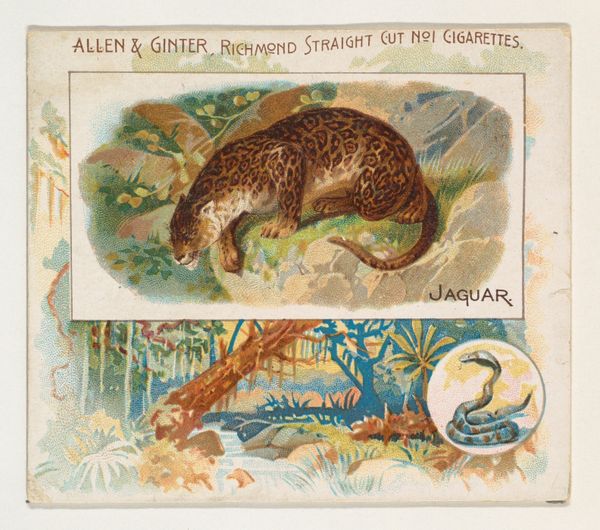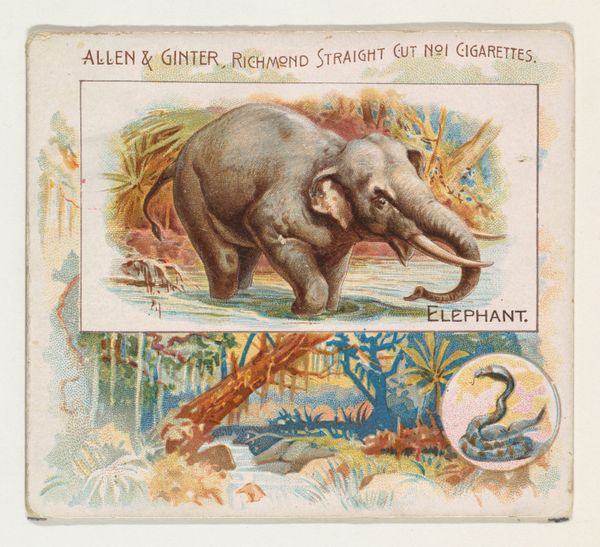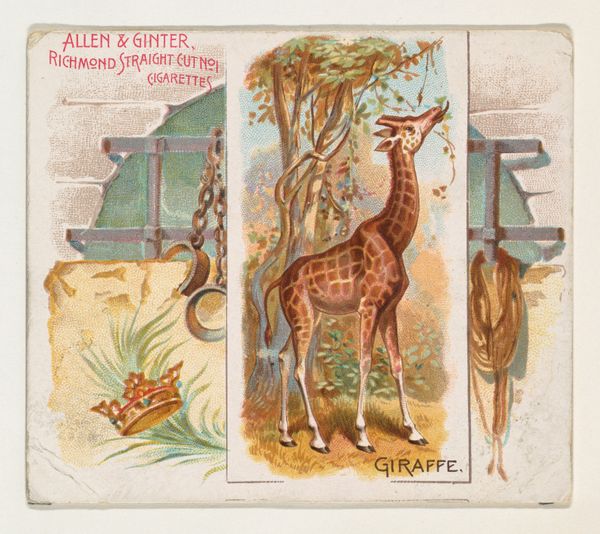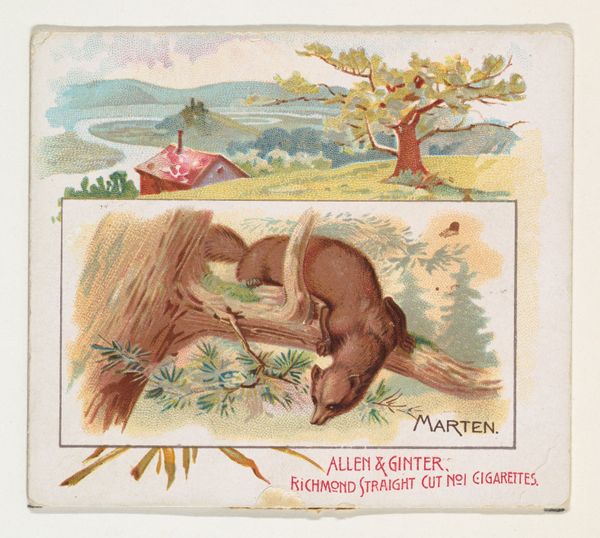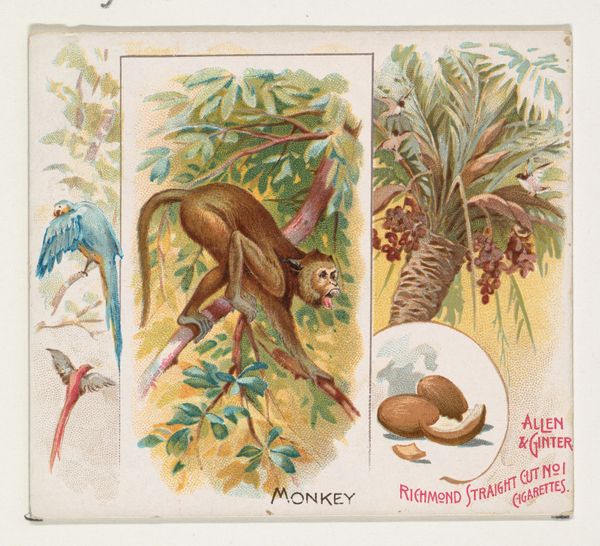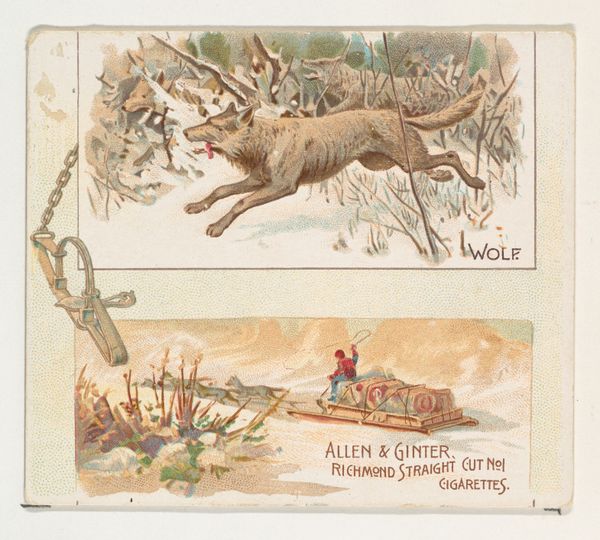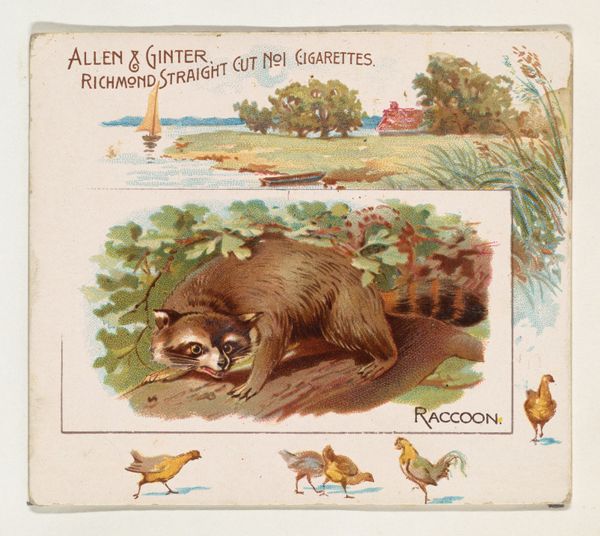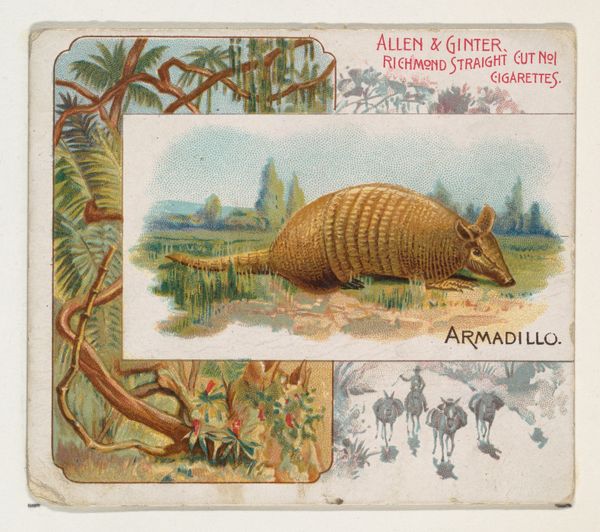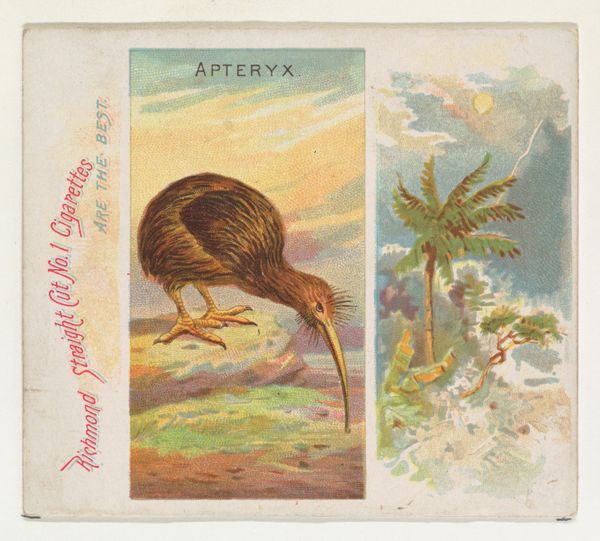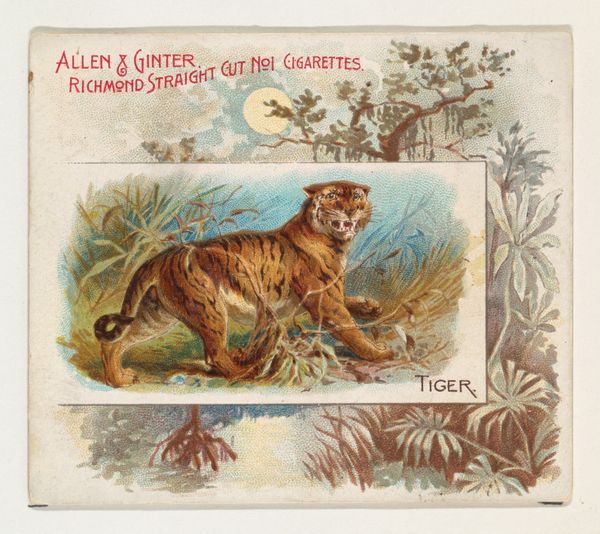
Grey Squirrel, from Quadrupeds series (N41) for Allen & Ginter Cigarettes 1890
0:00
0:00
drawing, coloured-pencil, print
#
drawing
#
coloured-pencil
#
16_19th-century
# print
#
impressionism
#
landscape
#
coloured pencil
Dimensions: Sheet: 2 7/8 x 3 1/4 in. (7.3 x 8.3 cm)
Copyright: Public Domain
Editor: This is "Grey Squirrel, from Quadrupeds series (N41) for Allen & Ginter Cigarettes," dating to 1890. It looks like a print, maybe with colored pencil, and is part of the Met's collection. It feels so... unexpected, like a miniature wildlife scene promoting cigarettes. What strikes you about it? Curator: It's precisely that tension, that collision of high and low, that’s compelling. The chromolithography process, designed for mass production, elevates the humble grey squirrel to a subject worthy of artistic representation. What were the labor conditions for producing these cards? And where were the materials sourced? These are essential questions. Editor: So you’re focusing on the means of making it, and its place in society. Curator: Absolutely. Cigarette cards like these were not mere advertisements. They were intricately crafted commodities, tiny reflections of a growing consumer culture and expanding global trade. The inclusion of "Richmond Straight Cut No. 1 Cigarettes" is very intentional - they wanted you to purchase THIS specific product and see its association with class. Editor: The 'Quadrupeds' series name also feels very elevated now. How does it affect our understanding to realize they're tied to a consumer product? Curator: It exposes the intricate relationship between art, industry, and consumption in the late 19th century. This artwork makes me curious about the lives and experiences of the factory workers, predominantly women and children, who were involved in the manufacturing of these cards and the commodification of nature. What role do you think advertising plays now? Editor: This makes me see it as more than just a quaint picture; it’s a product of its time, shaped by labor and materials, and part of a much larger system of commerce. Curator: Precisely. By analyzing the means of production and distribution, we can peel back the layers of meaning and understand how even the smallest objects can reveal profound social and economic narratives.
Comments
No comments
Be the first to comment and join the conversation on the ultimate creative platform.

